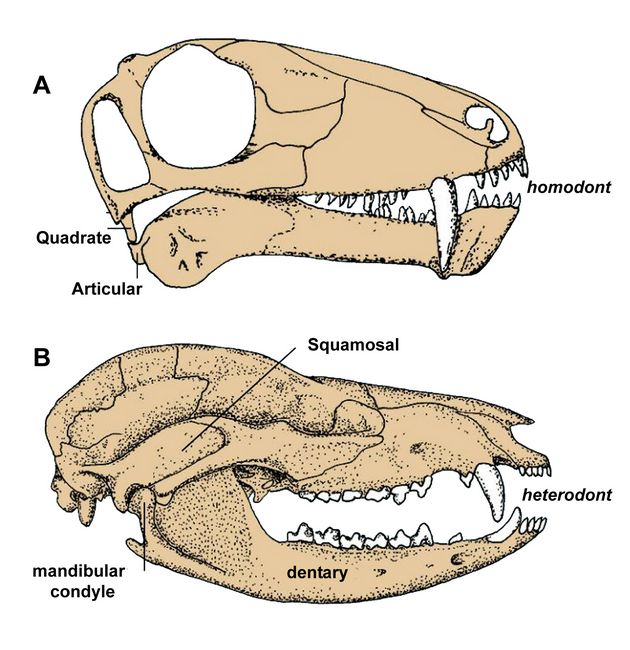Athena Review Image Archive ™
Jaw and tooth evolution from Reptile to Mammal

Evolution of the lower jar and teeth in A) Synapsids B) Mammals
The
evolution of the lower jaw from reptile to mammal involves the reuse of
bony elements in the reptilian jaw joint into elements of the
middle ear. Concurrently, the diversity of tooth forms gradually
changes from homodont (similar forms) in reptiles to heterodont
(various forms) in mammals.
In
non-mammalian synapsids, the jaw is composed of four bony elements. It
is called a quadro-articular jaw because the joint is between the
articular and quadrate bones. In therapsids (advanced synapsids
including mammals), the jaw is simplified into an articulation between
the dentary and the squamous part of the temporal bone, and hence
referred to as a dentary-squamosal jaw.
In mammals, the quadrate
bone evolves and diminishes to form the incus, one of the tiny
ossicles of the mammalian ear. Similarly, the articular bone evolves to
form the malleus. The squamosal bone migrates and lengthens to become a
new point of articulation with the lower jaw (at the dentary bone). In
many mammals, including humans, the squamosal fuses with the periotic
bone and the auditory bulla to form the temporal bone, then referred to
as the squama temporalis
The homodont teeth of saurapsid reptiles are typicaly elongated and cone-shaped with pointed tips. Therapsid teeth become more diversified with incisors and cheek teeth of different forms. Mammals have four types of teeth, incisors, canines, premolars, and molars.
References:
Romer, A. S. 1956. Osteology of the Reptiles. University of Chicago Press.
.Copyright © 1996-2020 Rust Family Foundation (All Rights Reserved).